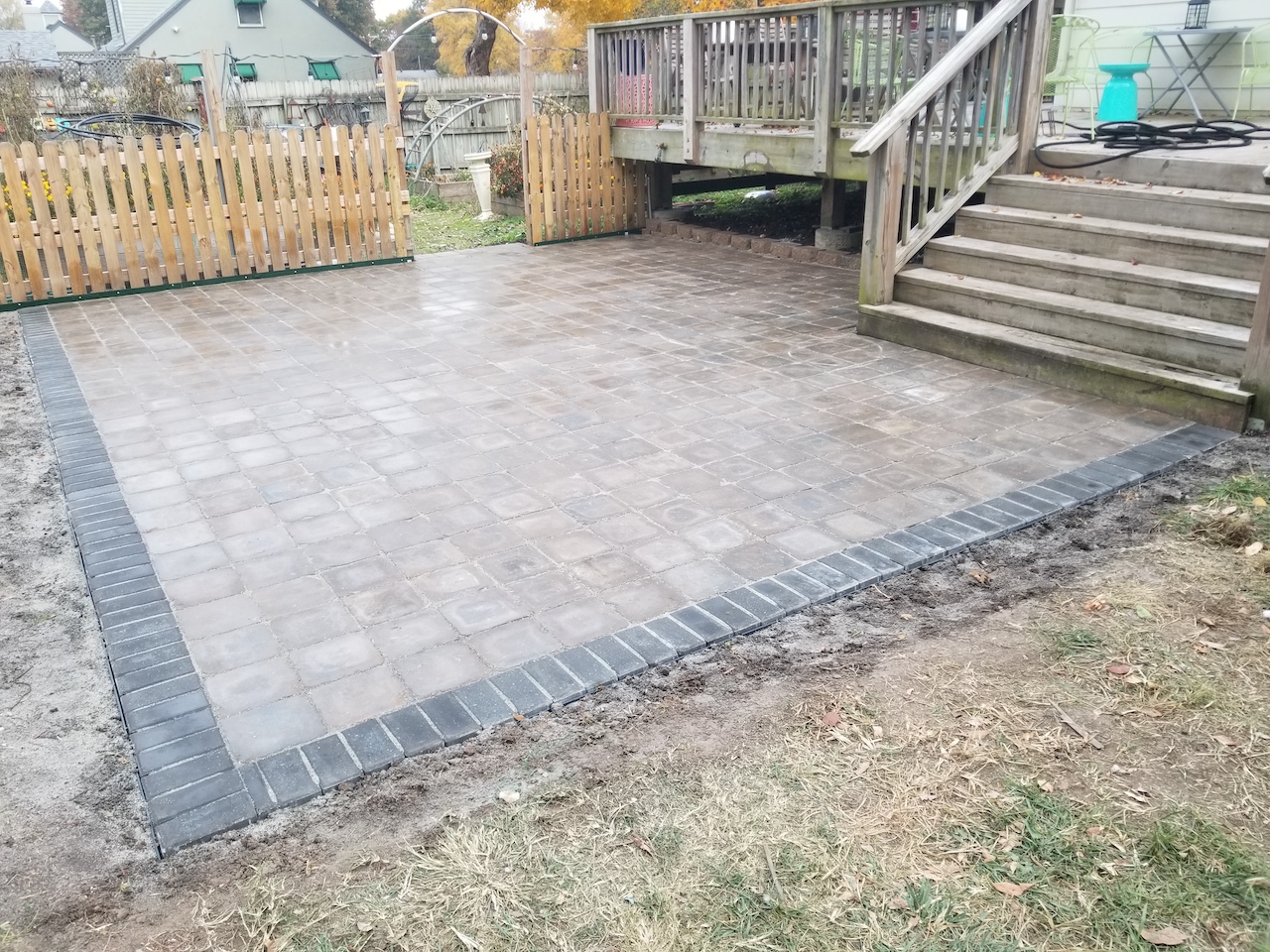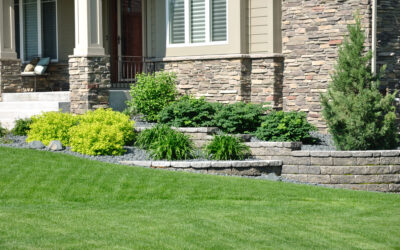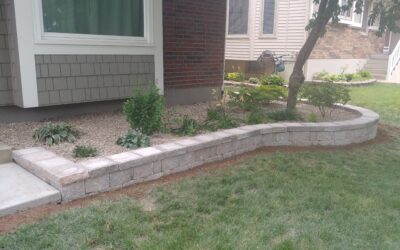How To Fix Concrete Patio Cracks Like A Pro: DIY Guide

The good news is that repairing cracks in a concrete patio is not an insurmountable challenge. With the right knowledge, tools, and a bit of elbow grease, you can restore your patio to its former glory and enjoy a smooth, crack-free surface once again. In this comprehensive guide on how to fix concrete patio cracks, we will walk you through the steps to diagnose the types of cracks you’re dealing with, understand their causes, and provide you with a range of effective solutions for fixing them. Whether you’re a seasoned DIY enthusiast or a homeowner looking to save on repair costs, our expert tips and techniques will help you embark on a journey to transform your cracked concrete patio into a pristine outdoor oasis. So, roll up your sleeves and get ready to learn how to crack the code to a flawless concrete patio restoration.
Identify Cracks in the Concrete Patio
Having a concrete patio to host summer barbecues on can be an amazing addition to your outdoor living area. But what happens when this beloved spot starts showing signs of wear and tear? That’s right – we’re talking about patio cracks. Spotting these early can save you a lot of hassle down the line.
The first step towards how to fix concrete patio cracks is identifying them. This might sound easy, but remember that not all cracks are created equal. Some are more like hairline fractures while others could be wide enough to trip over.
To start off, grab yourself a good pair of gloves, and get down close and personal with your patio surface. Look for any irregularities that stand out: lines running across or along the concrete slabs, tiny gaps between pavers, or even small holes where there shouldn’t be any.
Once you’ve identified these problem areas, take note of their size and location. This will help when choosing the right materials for repair. And remember – no crack is too small. Even hairline fractures can let in water leading to more serious damage over time.
Key Takeaway:
Fixing cracks in your concrete patio starts with spotting them early. Get up close and personal, looking for lines, gaps or holes. Cracks can be small hairline fractures or larger splits due to heavy loads or soil movement beneath the slab. Don’t ignore even the smallest ones as they can let water seep in causing more damage over time.
Clean and Prepare the Surface
First things first, it’s time to roll up your sleeves and give your concrete patio a good clean. It’s similar to prepping a canvas for painting; you wouldn’t want any dirt or debris interfering with the masterpiece, would you?
Now let me walk you through how to clean a concrete patio.
Sweep Away Debris
To start off, grab a sturdy broom. Sweep away all loose debris from the surface – think leaves, pebbles, or that frisbee your dog loves so much but keeps forgetting on the patio.
Rinse With Water
The next step is simple: rinse down the entire area using water. But remember not to flood it. A light spray will do just fine. This helps get rid of dust particles hiding in plain sight.
Treat Stains
You might come across some persistent stains during this process – don’t worry about them too much right now though.
We usually treat these spots separately using an appropriate cleaner and a power washer.
Final Rinse and Dry
The final step involves another round of rinsing followed by drying out completely before moving on to repairs. Patience is key here; let nature do its thing.
That’s it. With these steps, you’ll have a clean and prepped surface ready for the next phase of fixing those pesky concrete patio cracks. This process might sound tedious, but trust me – the results are worth every second spent.
Fill Cracks with Caulk
Filling cracks in your concrete patio can seem like a daunting task, but don’t worry. With the proper supplies and technique, you can quickly restore your patio to its original condition. For your patio repair job, you’ll require a special outdoor caulk of high-grade quality.
Why high-quality caulk? The best ones will adhere well to the concrete surface and resist weathering effects over time. They should also be flexible enough to accommodate minor movements without cracking or losing adhesion – qualities that lower-grade products might lack.
Selecting the Right Caulk
There are many different types of caulks available, so make sure to choose one suitable for exterior applications and compatible with concrete material – usually silicone-based or polyurethane varieties would fit the bill nicely.
The Application Process
Caulking isn’t rocket science—but it does require some finesse. It starts by cutting off the tip of your tube at an angle—this makes application easier because it allows more control over where exactly you’re placing product onto those pesky crevices on your patio’s surface.
Next, you’ll want to use a caulking gun for precision and ease. Make sure the caulk is pushed deep into the crack, completely filling it from bottom to top. This might seem like overkill but remember our skin wound analogy? It’s all about creating an effective seal.
Smooth Out Caulk
Smoothing out caulk isn’t just about aesthetics but is also crucial for the durability of your concrete patio repair. The smoother and more even your application, the better chance you give to your caulk to adhere properly.
If this is starting to sound like spreading frosting on a cake, well, you’re not far off. But instead of using a butter knife or spatula, we’ll use a putty knife or trowel.
A Step-by-step Guide: Smoothing Out Your Caulk Like A Pro
- Cut the tip of your caulking tube at an angle – think less guillotine chop and more elegant samurai sword swipe.
- Squeeze out some caulk into the crack – no need for too much pressure here.
- Here comes our star player – the putty knife or trowel. Gently glide it across the caulk to spread and smooth it out.
- Take a step back and admire your work, but don’t celebrate just yet. Let’s do one final check for any spots that need more smoothing.
Mistakes Happen – Don’t Sweat It
We all make mistakes; even Michelangelo probably chipped off more marble than he wanted once or twice. If you applied too much caulk, no worries. You can easily remove excess using your tool of choice.
Key Takeaway:
Getting your concrete patio repaired spot-on means more than just stuffing cracks with caulk. You’re aiming for a smooth finish that sticks around longer. The secret lies in using the right tools, like a putty knife or trowel, applying just enough pressure, and spreading out your caulk evenly.
Apply Patching Compound
Filling larger cracks and holes in your concrete patio needs a bit more muscle. That’s where patching compound comes into play for fixing patio cracks.
Patching compound, also known as patch or repair mortar, is designed to fill voids, gaps, or damaged areas to restore the surface to its original condition or prepare it for additional finishing, such as painting or tiling.
Select the Right Tools
When applying patching compound to repair cracks or imperfections in concrete surfaces, you’ll need a set of essential tools to ensure a successful and professional-looking result. Here’s a list of the tools you should have on hand:
Trowel: A trowel is the primary tool for applying the patching compound. Choose the appropriate size and shape for your project, typically a rectangular or pointed trowel.
Safety Gear: Before you begin any concrete repair work, ensure you have the appropriate safety gear, including safety glasses or goggles, a dust mask, and gloves, to protect yourself from dust and potential skin irritation from chemicals.
Concrete Patching Compound: Choose a high-quality concrete patching compound or repair mortar suitable for your specific project. There are various types available, including fast-setting and epoxy-based compounds, so select the one that best matches your needs.
Wire Brush: A wire brush is essential for cleaning and preparing the crack or damaged area. It helps remove loose debris, dust, and any loose concrete particles that may interfere with adhesion.
Mixing Tools: Depending on the type of patching compound you use, you may need a mixing paddle and a drill to mix the compound thoroughly. Follow the manufacturer’s instructions for mixing ratios and consistency.
Bucket or Mixing Tray: Use a clean bucket or a mixing tray to combine the patching compound and water (if required) to the right consistency.
Margin Trowel: A margin trowel is a smaller trowel with a pointed tip, ideal for filling in narrow cracks and working in tight spaces.
Sponge or Damp Cloth: You may need a sponge or damp cloth to smooth and finish the patching compound’s surface, ensuring it blends seamlessly with the existing concrete.
Concrete Sealer (optional): After the patching compound has cured, you may want to apply a concrete sealer to protect the repaired area from moisture and stains.
Paint or Stain (if necessary): For cosmetic repairs, have paint or concrete stain that matches the color of your existing concrete ready to apply once the patching compound has cured.
Remember to carefully follow the manufacturer’s instructions for the patching compound you’re using, as specific products may have unique requirements and drying times. Proper preparation, application, and finishing techniques will ensure a long-lasting and seamless repair to your concrete surfaces.
Mix Patching Compound
The next step is mixing up your patching compound until it has the consistency of peanut butter – creamy yet thick enough that it doesn’t run off your tool. Before you start, carefully read the manufacturer’s instructions on the packaging. Different patching compounds may have specific mixing ratios and requirements, so it’s crucial to follow their guidelines.
Fill In Cracks and Holes
Once mixed, the patching compound typically has a limited working time before it begins to set. Follow your patching compound’s instructions regarding the recommended application time.
Using a putty knife or trowel, apply the patching compound to the crack or hole. For small cracks, you can use a flexible putty knife or your finger. Press the compound firmly into the imperfection to ensure it’s completely filled. For larger holes, apply the filler in layers, allowing each layer to dry before adding more until the hole is level with the surrounding surface.
Sculpt For A Smooth Finish
After applying the filler, use the putty knife or trowel to smooth the surface, removing any excess compound and creating a level finish. For a very smooth finish, you can dampen the putty knife with water or use a damp cloth to smooth the surface further.
Allow Patching Compound to Dry
You’ve filled in the cracks, and you’re now staring at a freshly patched patio. But hold on. Don’t break out the lawn furniture just yet. This is where patience becomes your best tool. It’s crucial that we let the patching compound dry completely before moving forward.
Waiting times can fluctuate contingent on a few elements, for example, temperature, dampness, and the amount of application.
The Waiting Game: Understanding Drying Times
Most compounds will need between 24 to 48 hours to dry thoroughly. If it’s particularly humid or cold outside, this could extend even more. So check your local weather forecast.
This wait isn’t just about aesthetics – although no one wants a smudged patio – but also about durability. The drying process lets the compound fully bond with the existing concrete surface creating a stronger finish which helps prevent future cracking.
How Do You Know When It’s Dry?
If you touch it lightly with your finger and there’s no residue left behind – congratulations. Your patience has paid off and you’re ready for the next step; sealing up everything nicely so it stays put through every season.
Tips for Faster Drying
Here are a few tips to help speed up the drying process:
- If possible, schedule your repair work for a warm, dry day. This will allow the patching compound to dry more quickly.
- Ensure good ventilation if you’re working in an enclosed area. This helps moisture evaporate faster.
- Avoid applying too thick of a layer at once. Thinner layers can often dry more rapidly.
Patience during this step truly pays off when it comes to achieving lasting results for your patio repairs. Remind yourself – those who wait will be rewarded.
Key Takeaway:
Fixing concrete patio cracks is more than just filling them in; it’s a game of patience. Let the patch dry fully for a durable finish and to prevent future cracking. Factors like temperature, humidity, and thickness affect drying time, but good things come to those who wait.
Seal Concrete Patio
You’ve done the hard work of fixing those pesky cracks on your concrete patio. Now, it’s time to seal the deal. Sealing is a critical step because it protects your repair job and extends the life of your patio.
A good outdoor sealant acts like an invisible shield against future damage from weather elements and regular wear and tear. Think about how you apply sunscreen to protect your skin from harmful UV rays; similarly, applying a sealant safeguards your concrete patio.
Pick The Right Sealant
To start with, let’s make sure we get the right stuff for our project. Not all sealants are equal; some are tailored to outdoor use, while others may be more suitable for indoor or different materials.
Apply The Sealant Correctly
Read the Instructions:
Carefully read and follow the manufacturer’s instructions on the sealer’s packaging. Different sealers may have different application methods and drying times.
Apply Sealer:
Pour the sealer into a paint tray or a sprayer. If you’re using a roller, attach it to an extension pole for better reach. Begin applying the sealer in a uniform, even coat, starting from one end of the patio and working your way toward the other end. Be mindful of not leaving puddles or streaks. If using a sprayer, keep a consistent distance from the surface for an even application.
Edges and Corners:
Use a paintbrush to carefully apply sealer to edges, corners, and any areas that are difficult to reach with a roller or sprayer.
Overlap and Work Methodically:
When applying the sealer, overlap each pass slightly to ensure complete coverage. Work methodically to avoid missing any spots.
Multiple Coats (if needed):
Some sealers may require multiple coats for optimal protection. Allow the first coat to dry according to the manufacturer’s instructions, and then apply additional coats as necessary. Ensure that each coat is applied evenly and allowed to dry completely.
Drying And Final Touches
Last but not least – let’s talk drying time. Most outdoor concrete sealants need 24-48 hours to fully cure depending on weather conditions so be patient before you start arranging furniture or stepping on it.
If done correctly, this process will give your patio an extra layer of protection against damage while enhancing its natural beauty for years to come.
Key Takeaway:
Fixing concrete patio cracks is only half the battle. The real hero move comes in sealing your work with an outdoor sealant, acting as a shield against future damage. It’s about choosing the right product, applying it properly with clean tools on a dry surface, and giving it ample time to cure. Done right, this gives your patio lasting protection and beauty.
Conclusion
In this comprehensive guide, we’ve delved into the art of how to fix concrete patio cracks. Your patio, an outdoor sanctuary and extension of your home, deserves the attention and care that will keep it looking its best for years to come.
From understanding the different types of cracks that can afflict your patio to mastering the techniques for applying patching compound with precision, you now possess the knowledge and tools to address common issues head-on. Remember, timely intervention can save you both time and money by preventing minor cracks from turning into major structural concerns.
Sealing your concrete patio is the icing on the cake, providing a protective barrier against the elements and enhancing its longevity. By following the steps outlined in this guide, you can safeguard your outdoor oasis from moisture, stains, and wear, ensuring that it remains a beautiful and functional space for relaxation and entertainment.
As you embark on your journey to revive and maintain your concrete patio, always prioritize safety, meticulous preparation, and adherence to the manufacturer’s instructions. Whether you’re a seasoned DIY enthusiast or a newcomer to home improvement projects, remember that a well-cared-for concrete patio is not only a source of pride but also a lasting investment in the comfort and aesthetics of your outdoor living space.
So, roll up your sleeves, gather your tools, and let your concrete patio shine once more. With a little effort and the right know-how, you can create a vibrant and inviting oasis that will be enjoyed for years to come. Cheers to the patio of your dreams!
Read More Landscaping Tips:
Is It Worth Hiring A Landscape Designer?
How Much Does Landscaping Improve Home Value?



